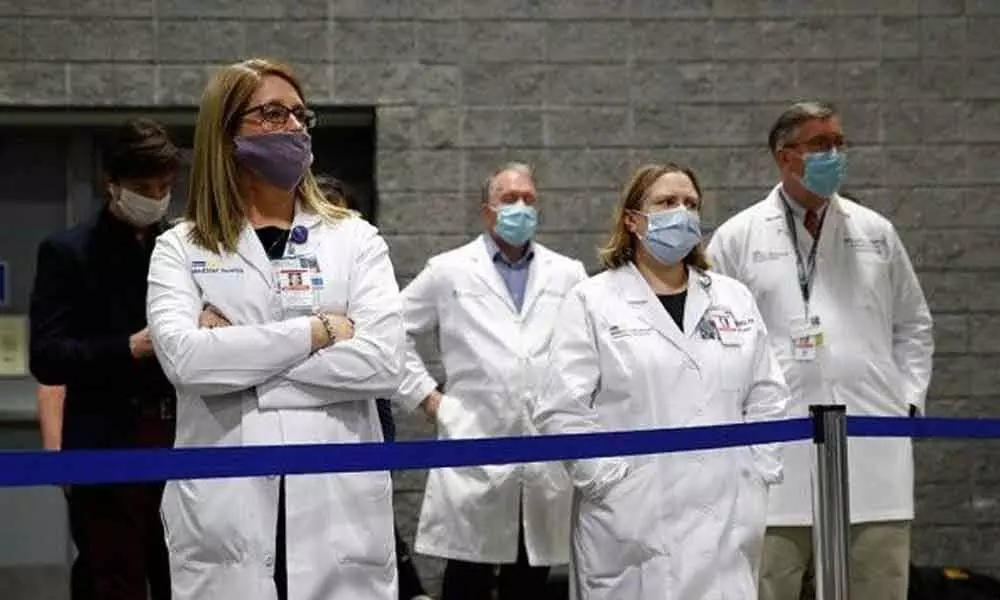Unpredictable effects of Covid on human body keep doctors baffled
 Medical professionals practice social distancing as they attend a news conference with District of Columbia Mayor Muriel Bowser at a temporary alternate care site constructed in response to the coronavirus outbreak inside the Walter E. Washington Convention Center in Washington.
Medical professionals practice social distancing as they attend a news conference with District of Columbia Mayor Muriel Bowser at a temporary alternate care site constructed in response to the coronavirus outbreak inside the Walter E. Washington Convention Center in Washington.Doctors today across the globe are focusing on treating the inflammatory reactions caused by the coronavirus but more than four months of clinical experience across Europe and North America has shown the pathogen does much more than invade the lungs
London: Doctors today across the globe are focusing on treating the inflammatory reactions caused by the coronavirus but more than four months of clinical experience across Europe and North America has shown the pathogen does much more than invade the lungs.
It attacks the heart, weakening its muscles and disrupting its critical rhythm. It savages kidneys so badly some hospitals have run short of dialysis equipment.
It crawls along the nervous system, destroying taste and smell and occasionally reaching the brain. It creates blood clots that can kill with sudden efficiency and inflames blood vessels throughout the body.
This proves that the widespread recognition the novel virus is far more unpredictable than a simple respiratory virus. The contagion is often believed to attack the lungs in a human body, but doctors fear it may also strike anywhere from the brain to the toes, The Washington Post reported.
Learning about a new disease on the fly, with more than 78,000 deaths in the United States attributed to the pandemic itself, doctors have little solid research to guide them, the Post stated further.
The World Health Organisation's database already listed more than 14,600 papers on Covid-19. Even the world's premier public health agencies, including the Centers for Disease Control and Prevention, have constantly altered their advice to keep pace with new developments.
"We don't know why there are so many disease presentations," said Angela Rasmussen, a virologist at the Center for Infection and Immunity at Columbia University's Mailman School of Public Health. "Bottom line, this is just so new that there's a lot we don't know," she stressed.
More than four months of clinical experience across Asia, Europe and North America has shown the pathogen does much more than invade the lungs.
"No one was expecting a disease that would not fit the pattern of pneumonia and respiratory illness," David Reich, a cardiac anesthesiologist and president of Mount Sinai Hospital in New York City, told the Post.
It can begin with a few symptoms or none at all, then days later, squeeze the air out of the lungs without warning.
It picks on the elderly, people weakened by previous disease, and, disproportionately, the obese. It harms men more than women, but there are also signs it complicates pregnancies.



















